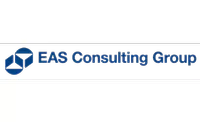Best practices for maintaining hygienic design
A look at key considerations to help identify and control equipment-related food safety hazards during maintenance operations.

To the credit of FDA, a wealth of resources has been assembled to help processors develop and implement a plan to come into compliance with the Preventive Controls rules. For example, the agency created a Food Safety Plan Builder to assist owners/operators of food facilities with the development of food safety plans that are specific to their facilities and has published several guidance documents related to implementing Food Safety Modernization Act.
FDA also partnered with numerous authorities through the Food Safety Preventive Controls Alliance to provide the required training for Preventive Controls Qualified Individuals (PCQIs) under a standardized curriculum.
The real work of compliance begins with the completion of your food safety plan (FSP) and the training of your PCQI. However, it does not end there. The responsibilities of a PCQI include:
- Developing or overseeing preparation of the FSP.
- Validation of the preventive controls.
- Review of records.
- Periodic review of the FSP.
The FSP includes a thorough hazard analysis that leads to implementing effective preventive controls, and it must be reanalyzed at least once every three years. But the facility must also review portions of the FSP under certain circumstances — for example, when a preventive control is found to be ineffective.
So what are some key considerations to help you identify and control equipment-related food safety hazards, particularly during maintenance operations?
Maintenance and repair
Every type of equipment is subject to wear and tear over time, requiring regular maintenance. The assessment should include inspections for lost, worn, broken or loose parts on equipment. Special attention is required for microorganism harborage sites such as worn or frayed hoses, porous welds or pitted, cracked or damaged product contact surfaces.
Any materials used during maintenance and repair must be safe and suitable for food processing and equivalent to the original component.
Know your schedule
Your FSP must reflect your knowledge of the operating characteristics of the equipment and which parts of the system are scheduled for periodic maintenance or replacement. Do you know the expected life for replaceable parts such as O-rings, gaskets, etc.? Is preventive maintenance written into your FSP?
Looking for quick answers on food safety topics?
Try Ask FSM, our new smart AI search tool.
Ask FSM →
Rethink your practices
Does the layout, configuration and installation of your food processing and handling equipment allow for adequate inspection and maintenance of a hygienic processing environment? Do you have enough space and clearance so that all equipment parts and components are readily and easily accessible for inspection, maintenance and troubleshooting?
Who maintains your equipment?
Be sure that you have requirements that are written and appropriate for personal hygiene for those who conduct maintenance and repairs in any part of your operation. Food safety training should be tailored for personnel who perform maintenance in and around food processing areas, with special emphasis on protecting product zones, sanitizing tools and accounting for all parts and materials.
Trust and verify
Review the completed maintenance operations before production resumes. Have technical problems been resolved? Are the repairs completed in a way that your equipment will produce safe foods when production resumes? Keep comprehensive records to verify that the repair and maintenance program is operating as it should.
The identification and control of equipment-related food safety hazards begins with the selection of food processing equipment that is fabricated and designed to be cleanable, and conforms to appropriate hygienic design principles.
3-A Sanitary Standards help processors identify and document conformance with hygienic design principles for equipment used in food processing:
- Materials of construction must be inert, non-toxic, non-corrosive, non-contaminating and impervious to moisture.
- Surface finishes must be durable, free of cracks and crevices, and smooth to a minimum measure of 32 microinch Ra (roughness average) for a product contact surface.
- Joints of various types must be cleanable, crevice-free and bacteria-tight.
- Drainability — all surfaces must be free-draining or drainable and properly pitched or sloped to prevent any liquid pooling.
- Cleaning and inspectability are fundamental to equipment design, manufacture and installation.
- Construction elements such as dead ends, gaskets, gasket retaining grooves, O-rings and seals, threads, springs, shafts and bearings must be bacteria-tight and accessible for cleaning, sanitizing and inspection.
Documenting the controls in your equipment maintenance program can help demonstrate that your company goes beyond just the minimum and embraces a preventive control culture.
This article was originally posted on www.dairyfoods.com.







